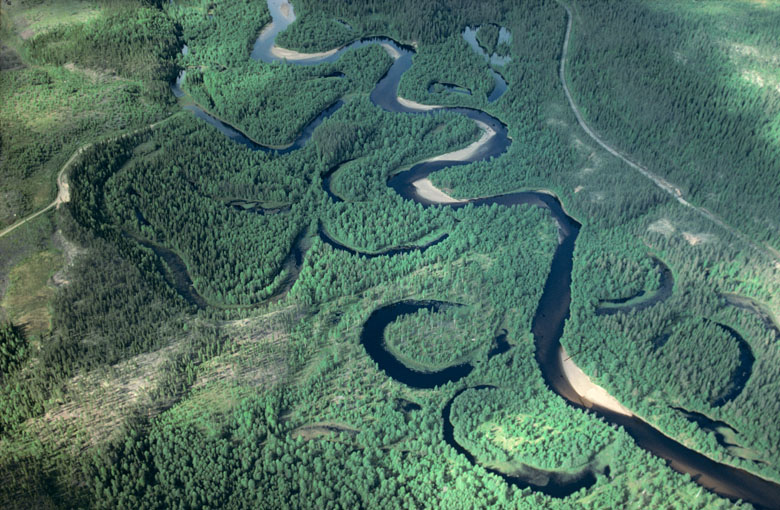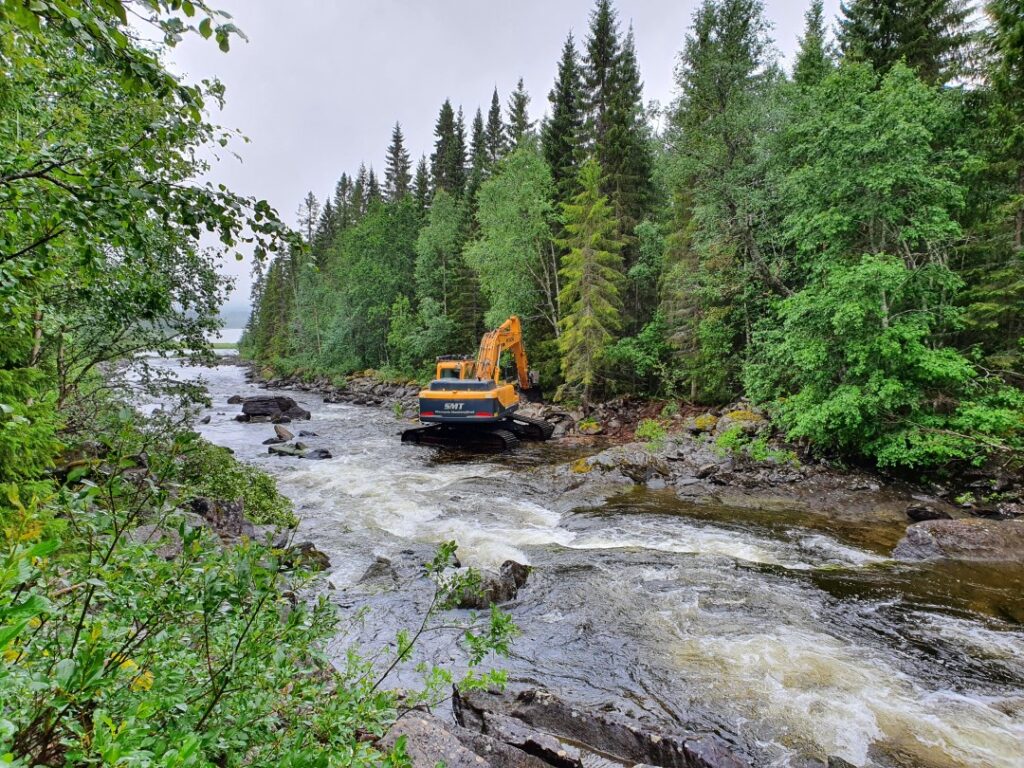Straight or winding – does it matter?
All watercourses in Sweden are affected by human activity. Humans have created new rivers by digging ditches, straightened meandering rivers and filled in others, as well as building hydropower stations and dams.
But does it matter if a river is straight or winding? Yes! When watercourses are straightened, the water flows faster, and more material from the surrounding land is torn off and washed away. Fish and other aquatic animals are negatively affected, especially species that need slow or still water to survive.

Photo: Swedish National Heritage Board-Pål-Nils-Nilsson-CC-BY
Straightening to move timber
In the past, trees felled in the forest were transported to the ports by water. Rivers and streams were straightened so that whole trees and large logs could easily flow with the current to the sawmills by the sea. This was called log driving. Log driving was used to transport timber until the 1960s, and some companies continued until the 1990s.
The waterways used for log driving were regularly dredged to make them wider, straighter and faster flowing. Log driving was a seasonal job that employed many people. It was very heavy going, and straightening the waterways was bad for the environment.
Log driving was a dangerous occupation in many places.
Photo: Pål-Nils-Nilsson-Swedish-Natioal-Heritage-Board-CC-BY
Impact of log driving in lake Eggelats in Lapland county, where a wall of rocks was built to lead the logs in the right direction.
Photo: Skogsfrun-CC-BY-SA
A canal for log driving still active in the late 1980's in Finland.
The stream Granån in Lycksele, Västerbotten county, has been partially cleared of big rocks to facilitate log driving.
Photo: Skogsfrun-CC-BY-SA
Nutrients leaking from farms
All agriculture affects aquatic environments and watercourses. Animals and plants that depend on flowing water are reduced or forced away. In order to grow crops, forest or wetland areas often need to be drained, and existing watercourses straightened to make way for fields. The straight shapes allow emissions and nutrients from industry and agriculture to be transported more easily to lakes and seas. The meandering streams had functioned as natural sewage treatment plants.
The stream Alnarpsån in Skåne county flows straightened through farmland.
Photo: Johan-Jonsson-CC-BY-SA
A ditch in German farmland.
Photo: Martina-Nolte-CC-BY-SA
Drainage of wetlands in the Netherlands, to create space for agriculture.
Photo: Michielverbeek-CC-BY-SA
Forest areas are also drained, to make the trees grow faster.
From straight to curvy again
In many parts of Sweden, people are working hard to restore certain water environments that have been affected by human activity. They will be restored to something as natural as possible. It is hoped that the plant and animal life can recover. Straight watercourses are being restored by digging back material to create a narrower, meandering watercourse again. The aim is to restore biodiversity. In some cases, both plants and animals have come back!

Photo: The County Administrative Board of Jämtland.